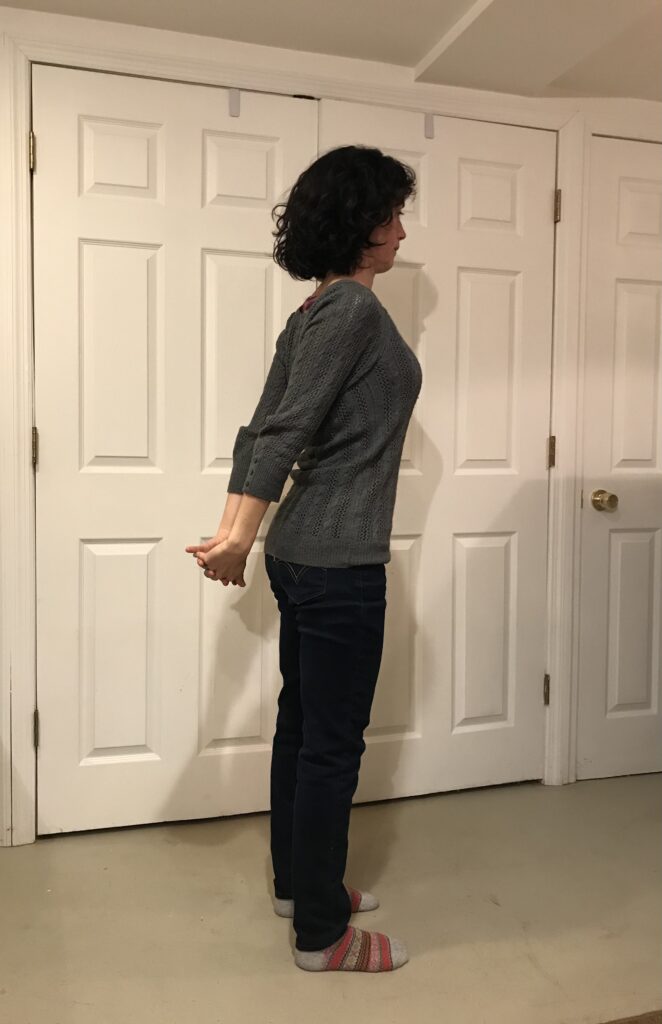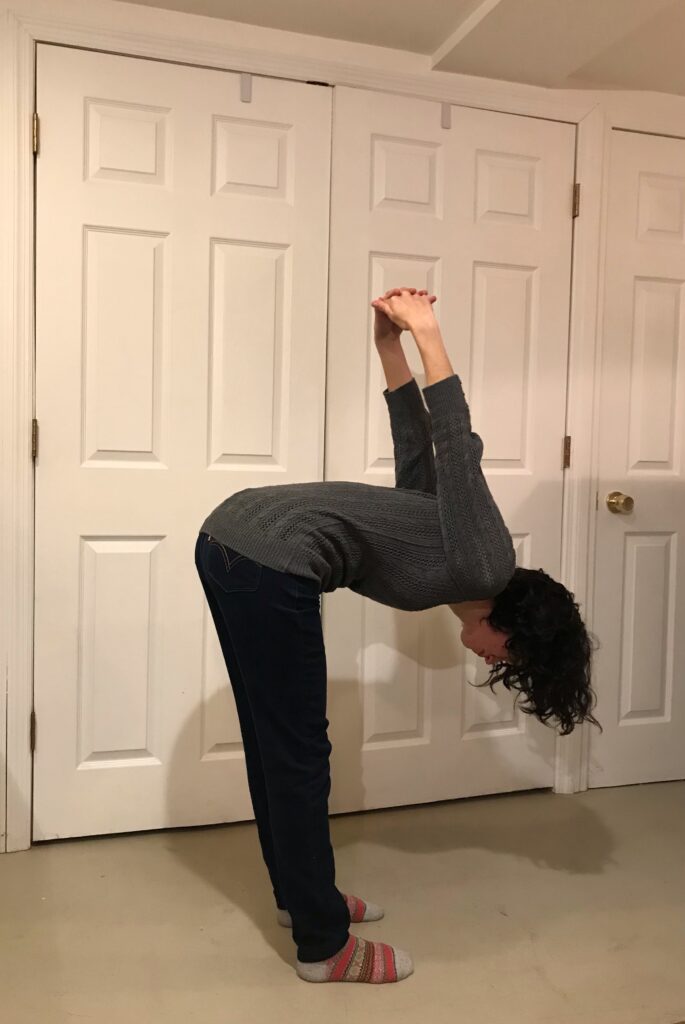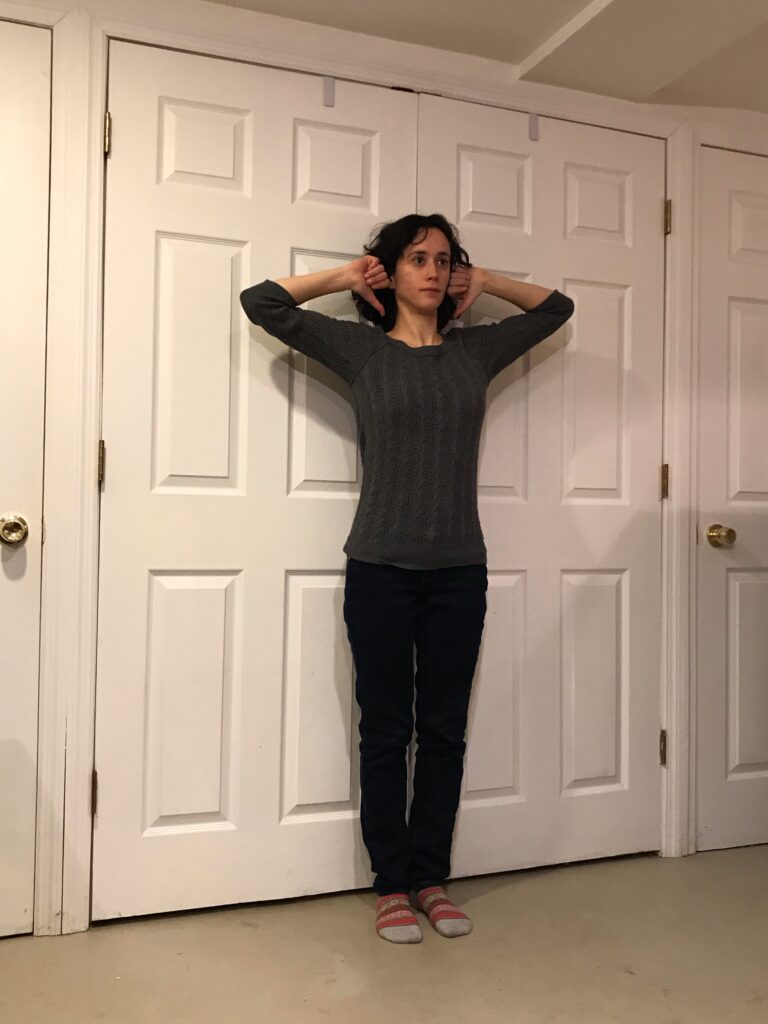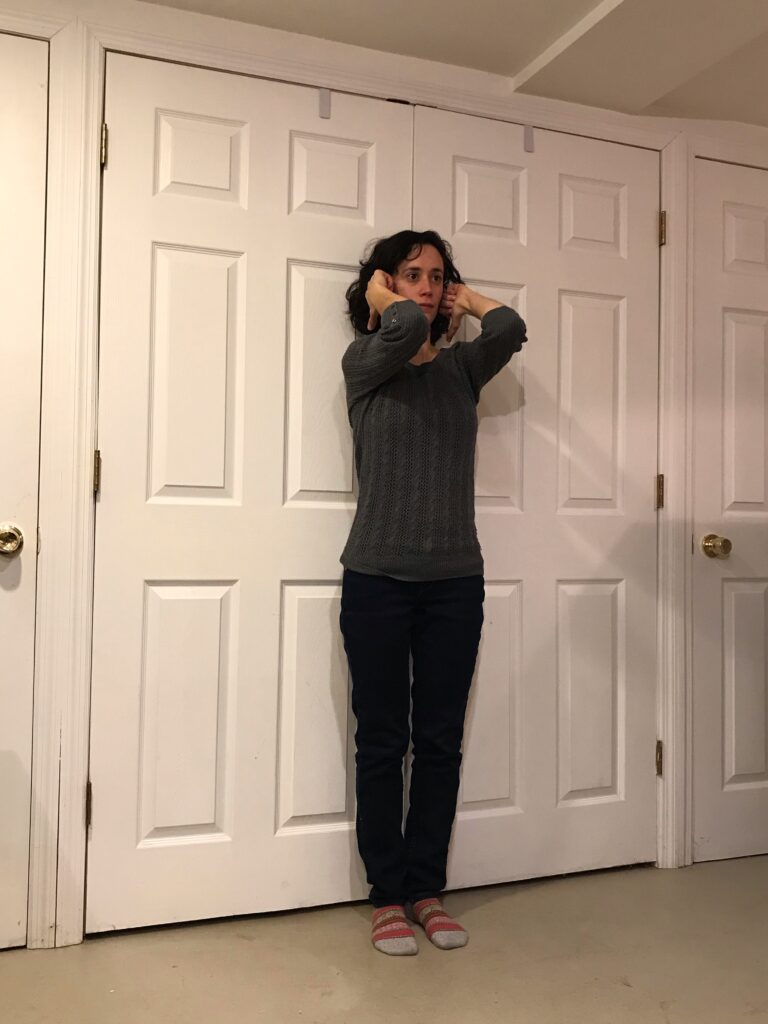When I was 16, I practiced my cello 3 hours every day. I clocked 12 hours every week in orchestra rehearsals – sometimes more – and I never worked out. Without proper muscle development and technique, I developed a repetitive stress injury – a “golfer’s elbow” that required heat, ice, and physical therapy several times each week for an entire summer. In order to avoid relapse, I’ve relied on a steady routine of strengthening exercises and these stretches for musicians.
My story is commonplace among orchestral musicians, particularly string players. But all musicians can benefit from regular stretching, light exercise, and awareness of tension in the body.
But keep in mind: if you experience sharp pain or tingling while performing any of these stretches, stop and consult a doctor or physical therapist.
9 Stretches for Musicians
Music may be made in the fingers, but you use your whole body to practice or perform. Long hours spent at the piano or in orchestra mean lots of sitting, slumping and hunching.
Back Stretches
To undo the strain of all that sitting, try some back stretches. These stretches require no equipment and are simple enough to perform in between rehearsals or on break.
1. Thoracic mobility stretch
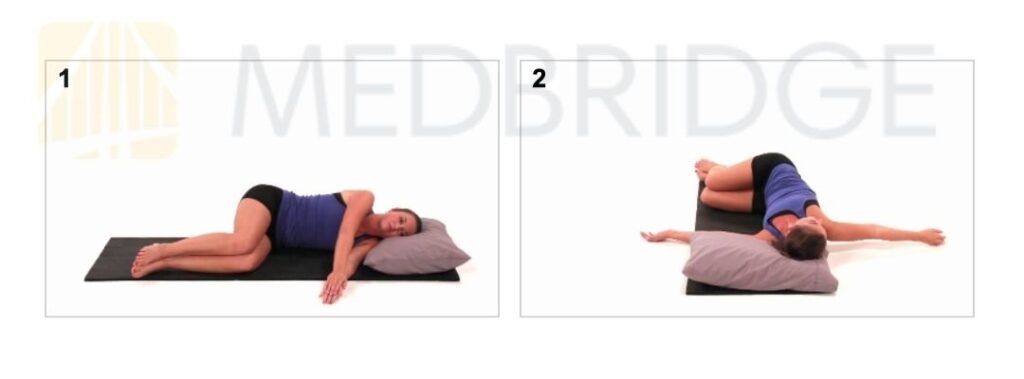
Lie down on your left side, and bring your knees in front of you as if you were sitting in a chair. Your knees should be stacked atop one another, and the angles of your hips and knees should both be 90º. Extend your left arm out on the ground, perpendicular to your body, and stack your right arm on top of it, palms together. Take a deep breath; on the exhale, lift your right arm to open like a book and reach it across your body to hang perpendicular on your right side. Make sure your knees stay stacked, and that the top knee doesn’t slide to the right as you open up.
If you’re tight, the back of your hand might not reach the ground. That’s ok – over time, it will gradually approach the ground as your chest muscles relax and loosen.
Take several breaths. You can hold this stretch for as long as two minutes; just watch for any tingling or pain shooting up your arm, a sign that you should go back to the start position.
To come out of this stretch, slowly bend your right arm and drag your fingers across your chest until they meet your extended left hand. Roll onto your back, and then set yourself up on the right side to perform the stretch in the opposite direction.
2. Cat/cow stretch
This one is a classic – much-loved not just for its name but for the way it loosens up a stiff back.
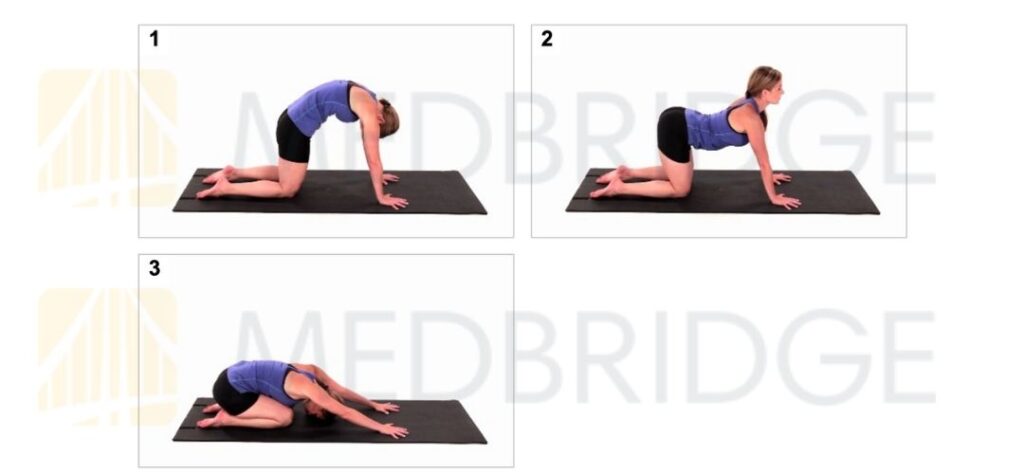
From a quadruped position (hands and knees), align your shoulders over your wrists and your hips over your knees. Take a deep breath as you drop your chest, scoop your back, and tilt your head back to the ceiling. This extended position is the “cow” part of the stretch: picture the hollowed-out back of a bovine. On your exhale, reverse the direction of your back and arch it like an angry cat’s as you drop your head to your chest. Push up from your hands to round your back and separate your shoulder blades. Alternate directions/ animals with each slow breath, and finish in “child’s pose,” as shown above.
If you have weak wrists or sensitive knees, you can try performing the cat/cow stretch while standing. Start with feet hip distance apart and knees slightly bent. Place your hands atop your knees as you cycle through cat/cow stretches. In “cow” position, look toward the ceiling and arch your back to pull your hips away from your belly. In “cat” position, tuck your hips underneath your belly and round your back as you look toward your navel.
3. Legs-up-the-wall stretch
This simple stretch allows you to support your back while stretching your legs.
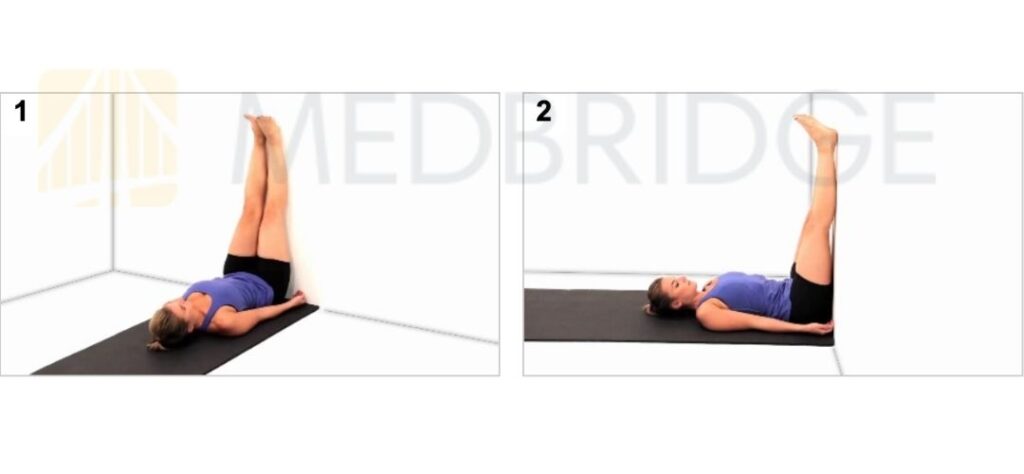
Locate a clean wall free of obstruction. Lie down and pivot so that your body is perpendicular to the wall and your legs go straight up. Scooch if you need to; the closer your bottom is to the wall, the better stretch you’ll get for your hamstrings, which bear the brunt of all your sitting. Flex your feet and try to relax into the stretch, straightening your legs as they allow. To come out of it, gently bend your legs and turn to the side to bring them to the floor.
Shoulder Stretches
Most of the repetitive motions musicians sustain in their hands and arms require protracted (rounded) shoulders. To make matters worse, orchestral musicians tend to hunch in rehearsal to peer at music that’s too far away to read. Undo some of that damage with these active shoulder stretches for musicians.
4. Pec Minor Stretch
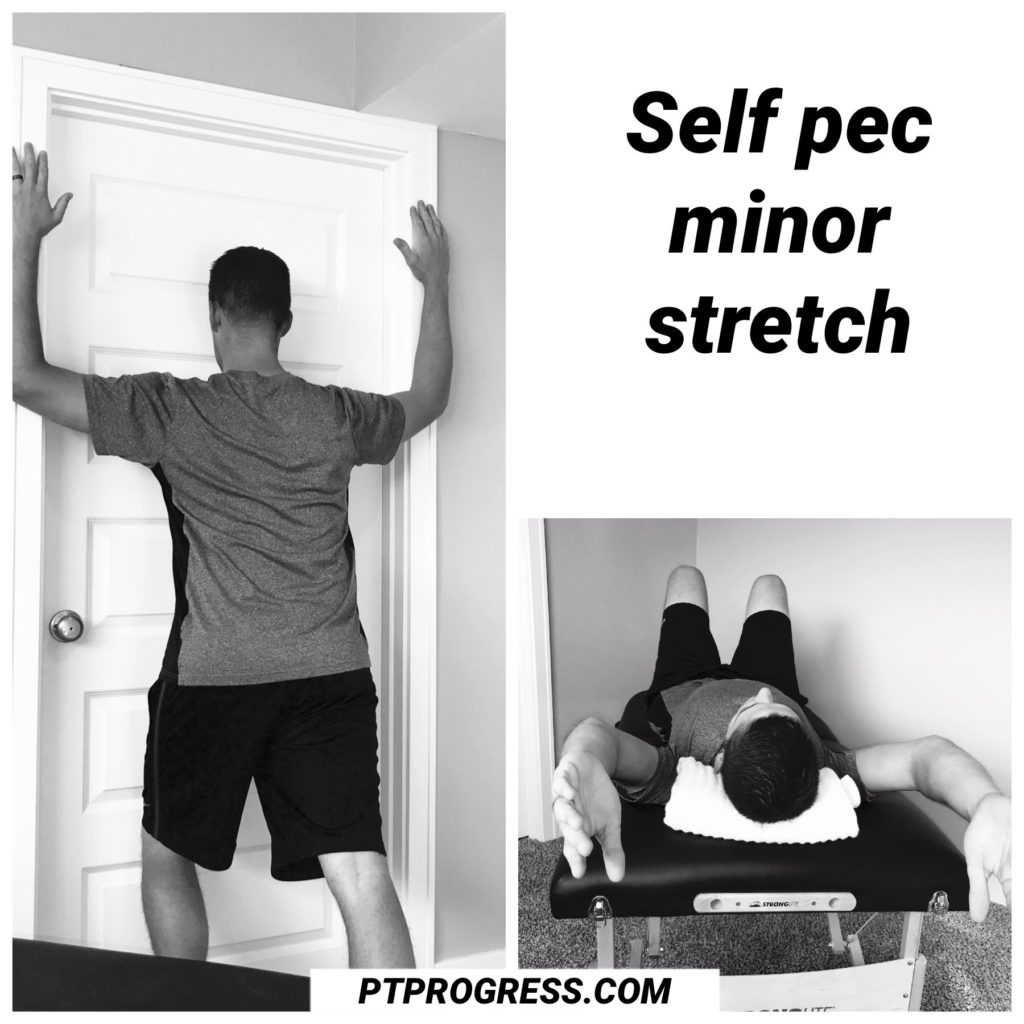
Similar to the thoracic mobility stretch, a pectoral stretch helps open up your chest and reverse shoulder protraction. You can perform this stretch in a corner or doorway. Facing the corner in a staggered stance (one foot in front of the other), place your hands on the wall about shoulder height. Gently shift your weight to the front leg, feeling a gentle stretch through the chest, or pectoral muscles. You should keep your head neutral (ears over shoulders) and look straight. Hold for 15-20 seconds for 4-5 repetitions.
If this is too much, you can try performing this stretch lying down on your back, as shown in the photo above. Let gravity open your chest up as you “goal-post” your arms.
5. Triceps stretch
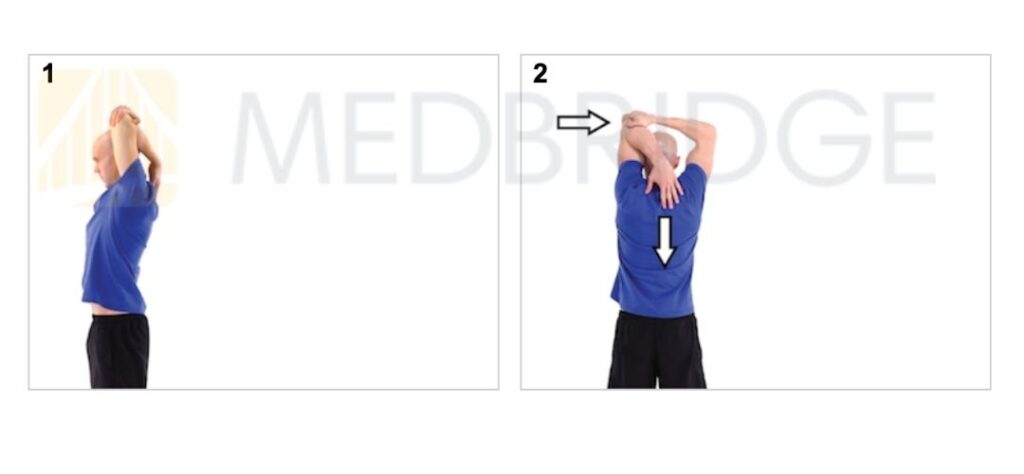
For this stretch, stand up tall and reach both arms up to the ceiling. Bend one arm at the elbow so that your palm faces the back of your head. With your other arm, grab your elbow and guide it to line up with your spine. You might not have the flexibility to bring it this far, but over time reach to place your hand in between your shoulder blades. Breathe, and keep your head in line – don’t bend forward or kink your neck. Hold for 15-20 seconds. Slowly release before restarting the stretch on the other side.
6. Shoulder stretch with bend
Stand up straight, with feet shoulder-width apart. Roll your shoulders back and clasp your hands behind you. Extend your arms straight, keeping your fingers intertwined with knuckles facing the floor, and lift your arms off your back. Hold for 15-20 seconds, breathing deeply. For an extra stretch, retain this shape as you bend forward. If flexibility allows, bend until your extended arms point straight to the ceiling. Reverse your bend before releasing your hands.
Wrist Stretches
Repetitive stress in the wrists, fingers, and arms can lead to tension and tingling. These sensitive areas warrant careful, slow motions, so be mindful of pain or numbness as you stretch.
7. Wrist extension stretch
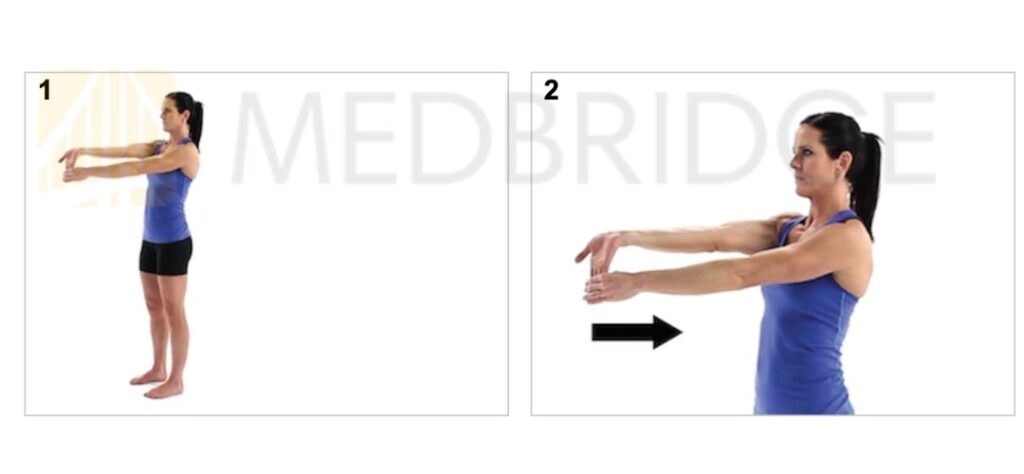
What’s nice about wrist stretches is that you can perform them discreetly in your chair while counting rests. For a classic wrist stretch, straighten up and square your shoulders on your back. Extend your arms straight out in front of you; rotate one arm palm-up. Using your other hand, press down on the outstretched hand so that the fingers point down towards the ground; be careful not to pull on your fingers. If you’re especially tight, begin this stretch from a bent-elbow position just in front of your chest, and slowly outstretch the arm after initiating the wrist extension. Hold for 15-20 seconds before switching hands.
8. Prayer stretch
Stand or sit up straight, with shoulders square on your back. Bring your hands into “prayer” position, with palms flat together and elbows bent. While keeping the palms pressed together, slowly lower your hands until they hover just above your navel. You should feel a slight stretch, particularly in your fingers; hold the stretch for 15-20 seconds. For more of a stretch, gradually glide your hands to the left or right; this will intensify the stretch for whichever side you’re on. Or, bend back the fingers more on one side than the other, then alternate.
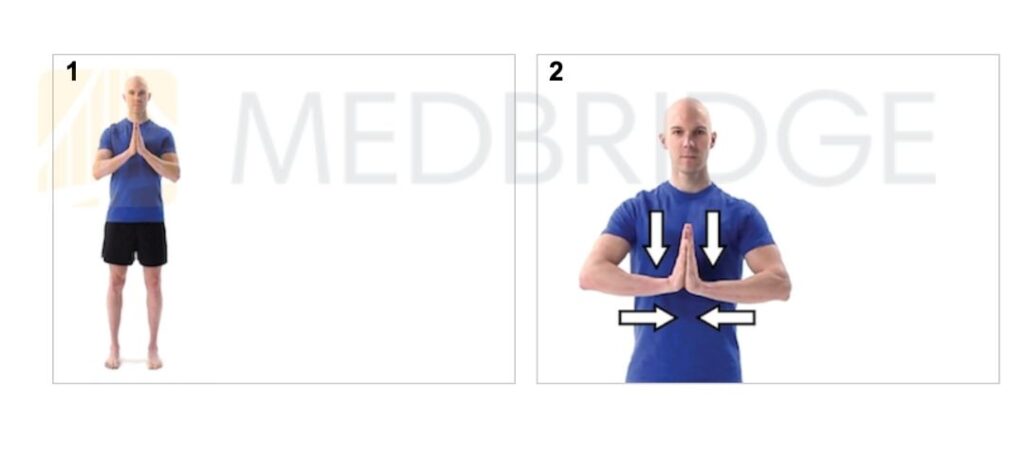
If you’re particularly flexible, you can also try performing this stretch behind your back. It hits different muscles, retracting your shoulders and opening up your chest.
9. Nerve glides
The term “nerve glide” sounds a bit intimidating, but it only means a subtle isolating and lengthening of a particular nerve in the arm. Because this movement is so subtle, you must maintain impeccable posture: straight back and square shoulders, with ears and neck in line with your spine. But don’t be stiff. Breathe deeply as you extend one arm out to the side. Touch your thumb to your forefinger and stretch your other fingers behind you, as shown in the photo below.
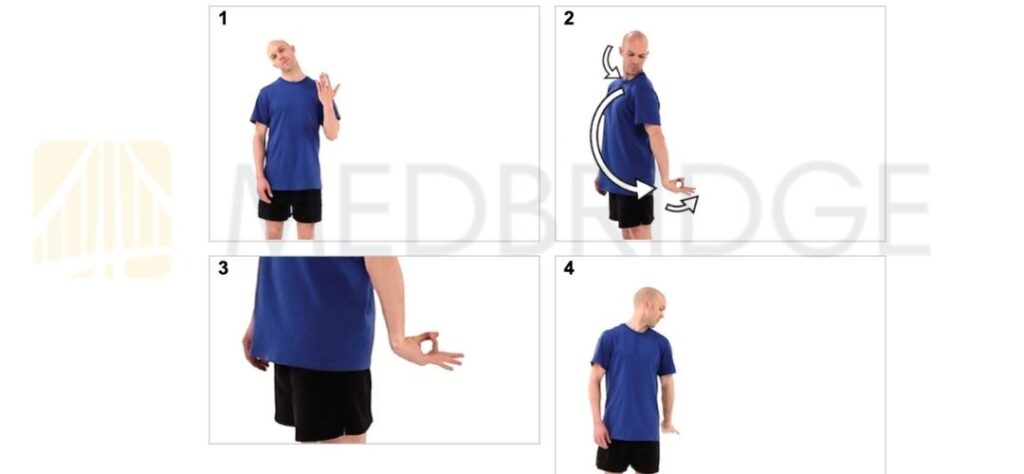
To deepen the stretch, tilt your head slightly with your ear towards your shoulder. Tilting your head in the direction of the stretch will relieve the stretch, while tilting in the opposite direction will deepen it. Just watch for any tingling – and come out of the tilt or stretch if your fingers feel numb. Hold for 5-10 seconds before releasing; repeat 10 times on each arm.
There are lots of nerve glides to play around with, but another one I recommend starts the same way. After outstretching your arm by your side, rotate it so that your hand is palm up. You may already feel a little “something” here, but for more of a stretch, extend your hand back with straight fingers. Utilize the head tilts to deepen or modify the stretch.
Strengthening Exercises for Musicians
An important lesson I learned from my playing injury is that the best way to relieve pain is to prevent it in the first place. But for most musicians, cutting back on practice time or rehearsals isn’t an option.
Instead, you can recalibrate your posture through lessons in xAlexander Technique. This century-old method uses controlled movements and mindful posturing in everyday activities to release tension in the body. Many performers – instrumentalists and vocalists alike – have regained performance strength and confidence through Alexander Technique.
For me, physical therapy was the way to go. Over several weeks of tailored workouts and home exercise programs, I built core strength to stabilize my posture and reduce the strain on my wrists, shoulders, and neck while practicing.
I’ll share a few of those exercises, with the disclaimer that they’re not meant to treat an injury on their own. If you have a playing injury or experience recurrent pain from overuse, seek the advice of a physician or physical therapist. I’m just a cellist.
Abdominal Bracing: Heel Slides
One of the first exercises I learned in PT was extremely underwhelming yet surprisingly helpful. If you never/rarely work out, your core muscles are probably weaker than they should be to withstand your many hours of practicing. The best way to support better posture is to strengthen your abdominals with heel slides.
Lie on your back, with your knees bent at a 90º angle. Contract your lower abdominal muscles by pulling your navel into your spine; imagine you’re squeezing into a tight pair of pants. Keep your lower back flat on the floor, and don’t let it arch throughout this exercise.
If you’re comfortable, slide the heel along the ground until your leg is straight. If your hip snaps as you straighten, lightly press the sliding heel into the floor and squeeze your glutes slightly. To return to the start position, contract your lower abdominals, keep your back flat, and with resistance slide the heel back to where it began. Alternate 10 slides on each side, breathing deeply throughout.
External Shoulder Rotation
If any of the above shoulder stretches struck a chord (or cord!) and you feel particularly tight, you should focus on strengthening your shoulders in external rotation. Lie down on one side with your head supported by a rolled-up mat or pillow, and tuck a folded towel under your top arm. Bend your elbow to 90º, and very slowly rotate your arm upwards towards the ceiling. Maintain contact with the folded towel; only move your upper arm, from the shoulder. Repeat 10 times on each side, and perform 2-3 sets as part of your routine. You don’t need to hold any weight; just keep slow, steady motions.
Scapular Retraction
For more shoulder exercises, try this scapular retraction pull. You’ll need a resistance band; the ones pictured here are from Black Mountain and cost about $25 on Amazon. Fix the midpoint of the resistance band around something stable, like a pole. Keeping your hands at waist-level, pull the bands towards you until your elbows tuck behind your back. You can also pull the bands with straight arms until your arms are by your sides. As you pull, think about squeezing your shoulder blades “down and in” towards your back pockets. Perform 2-3 sets of 10 repetitions each way.
Elbow “wing” flaps
This movement is half stretch, half exercise. Stand up straight, with your back against a wall. Make two thumbs-up with your hands, and hold them upside down alongside your ears so that your elbows stick straight out. Try to keep your shoulders and elbows in contact with the wall. For the exercise, take a deep breath and slowly “flap” your elbows towards one another as you exhale. Keep your head and upper back against the wall. You might not be able to bring the elbows to touch, but close them as far as you can. Inhale to open the elbows back out to the side, and repeat. As you “flap,” make sure your hands actively retain the “thumbs-down” position beside your ears. Start with 20 reps; increase as you build strength.
Practice these Stretches for Musicians!
You don’t have to let muscle tightness, pain, or numbness impede your music career. But if you practice regularly with improper posture and insufficient strength, you’ll set yourself up for a repetitive stress injury. Keep your muscles limber with these stretches and nerve glides, and build strength slowly with light exercise. As with music, practice makes “perfect”; your body needs repetition, consistency, and accuracy to heal and build.

This article was written by Naomi Benecasa, a cellist with a Bachelor’s in Music Performance and a Master’s in Music Psychology. Fascinated by fitness and fermentation, she provides copywriting and editing services for PTProgress from her home in New York.


